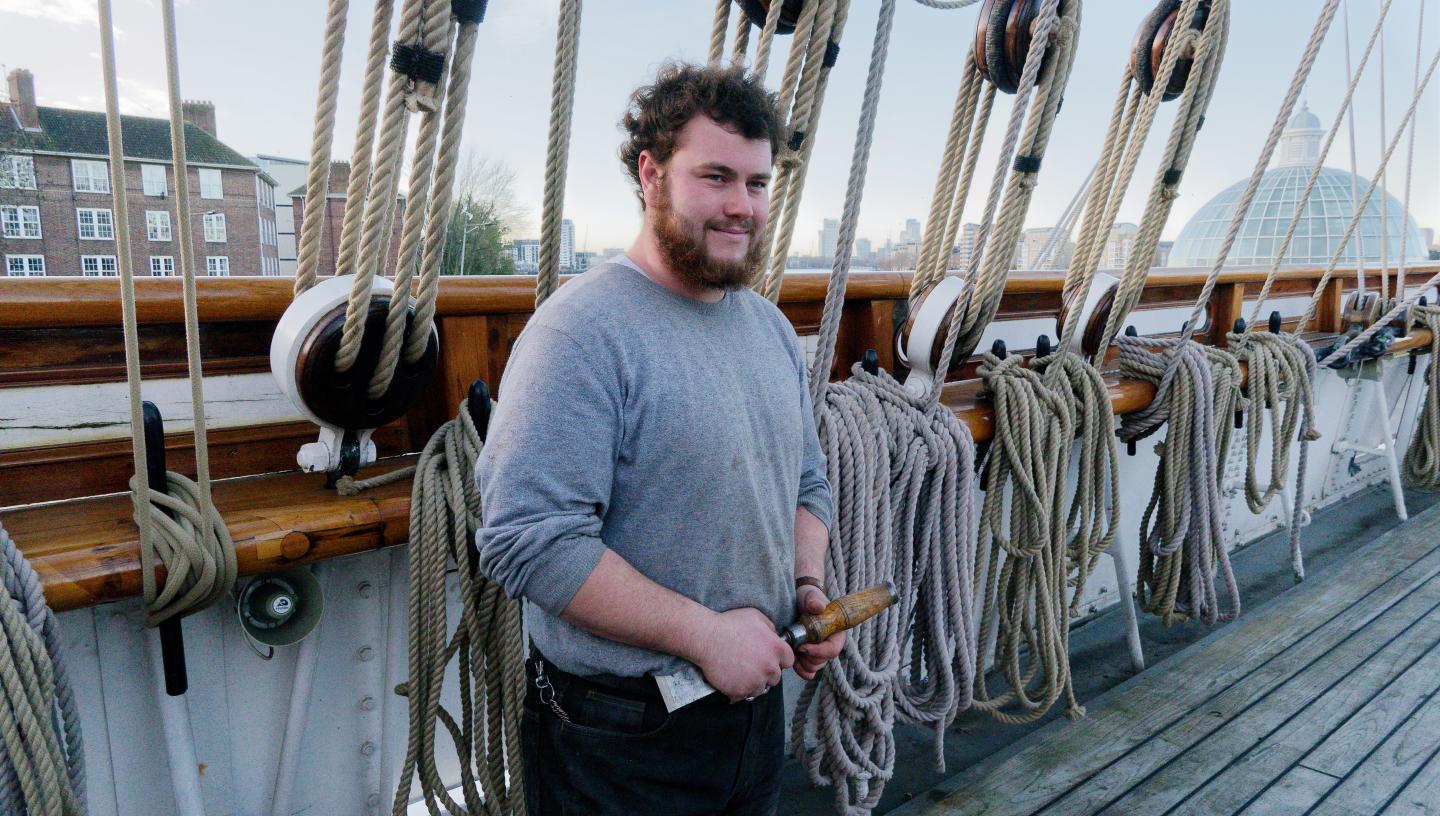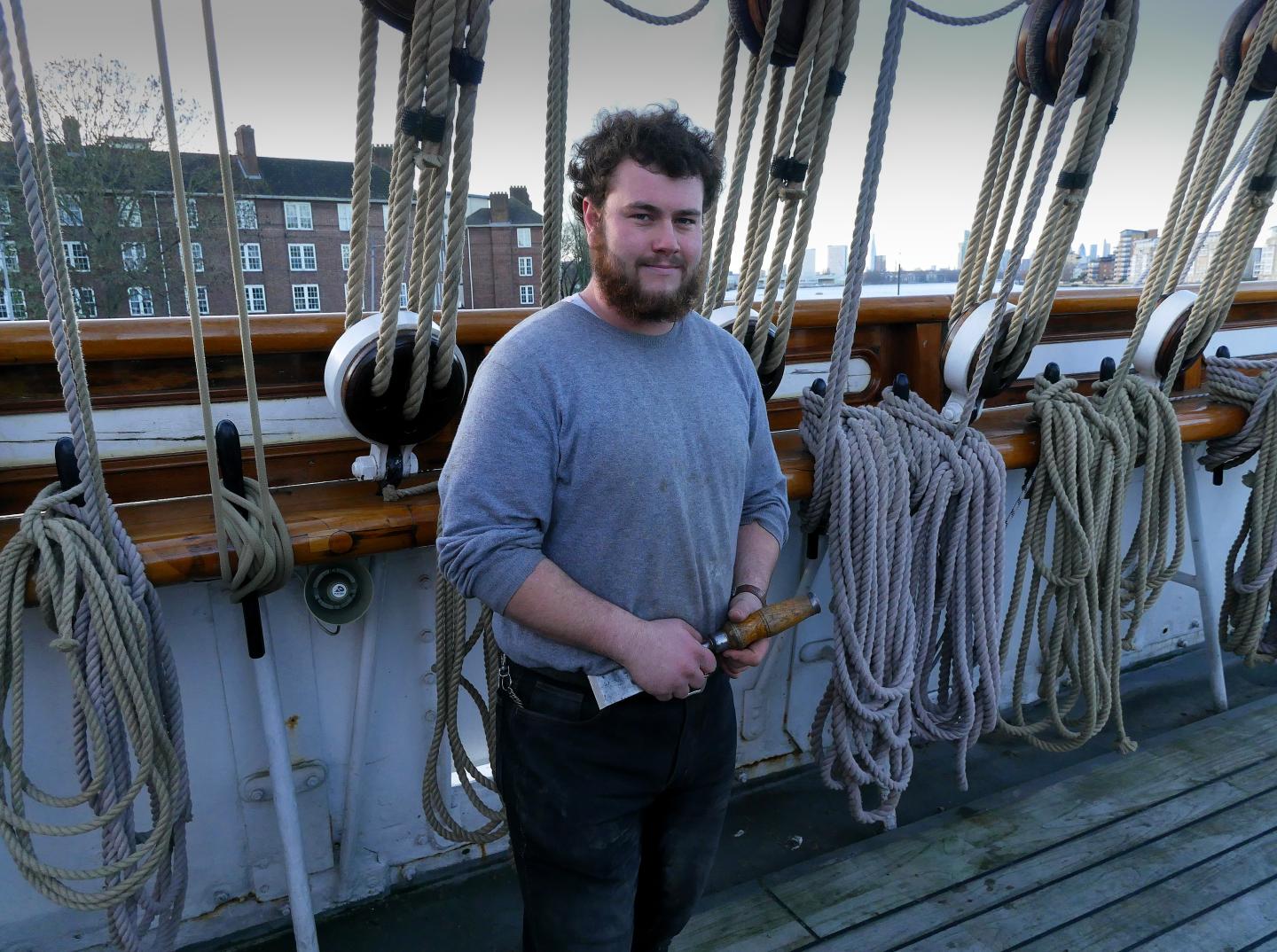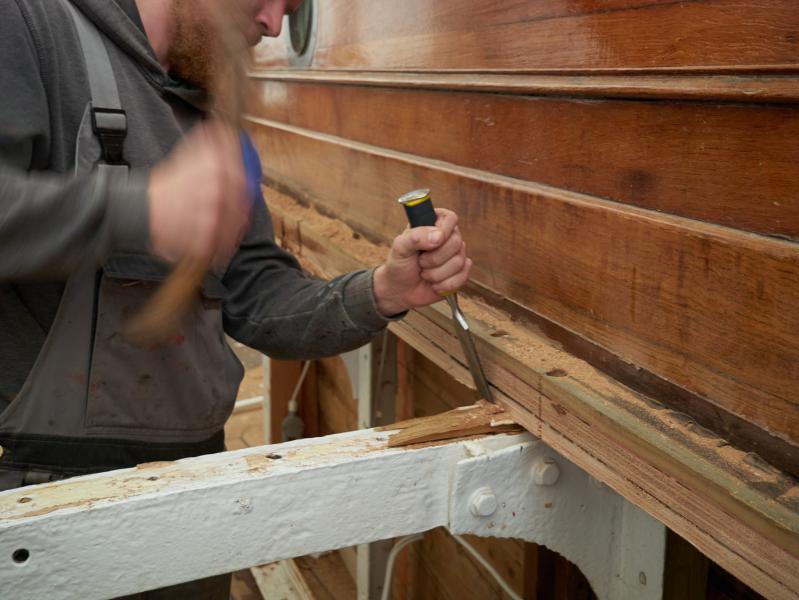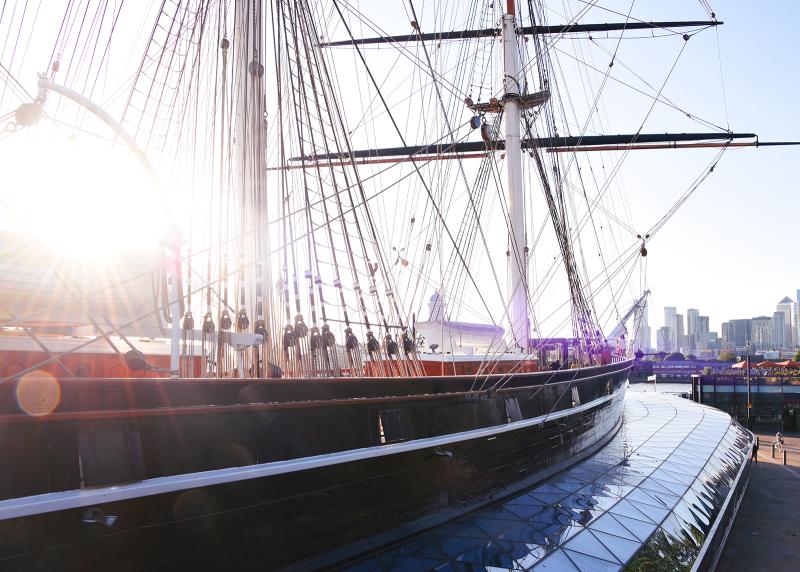
For Lucian, becoming a boatbuilder was almost a natural calling. After finishing school, he decided to pursue an apprenticeship in boatbuilding and has never looked back.
Lucian was one of four shipwrights involved in replacing Cutty Sark’s poop deck, which had leaked and rotted. As part of this six-month project, he worked with shipkeeping specialists T.S. Rigging to lay new deck planks using traditional techniques.
From refining skills to traditional tools, Lucian gives an insight into what it’s like to work on the iconic tea clipper.
What made you want to become a boatbuilder?
It was something I had always wanted to do. I did a lot of sailing on the traditional Thames barges, and I was surrounded by a lot of people who were shipwrights. I knew I wanted to be part of this industry and get involved in the heritage aspect.
In 2023, I received my Level 3 City and Guilds Boatbuilding apprenticeship, which took four years to complete. I specialised in timber and woodworking and worked on several vessels. I built a set of trestle trees – short pieces of timber attached to a mast – for HMS Gannet, a sloop of the Victorian Royal Navy, based in the Historic Dockyard Chatham. I also spent time on Cutty Sark, learning techniques such as whipping, where a thread is put around a layer of rope to stop it from unturning.
It's very common for people in this industry to have a wide range of traditional skills. When working aboard a ship, it’s necessary to be able to do everything: Cutty Sark’s crew would have known and learned all these things throughout their career.
What’s it like to work on Cutty Sark?
It’s quite special to say that I’ve worked on a vessel like this: it’s fantastic to think that we’re doing our bit to preserve the ship and put these traditional skills into action.
We’re using specialist tools such as mauls – a heavy striking implement – and caulking irons, a flared chisel-like tool. These tools often have stamps on them from a few hundred years ago with names on them. For this project, I’m using a chisel that has a maker’s mark from 1909. It’s nice to go through your career and pick up things like these which have been passed down.

The conservation project is giving me a chance to use and refine the skills that I learned on my apprenticeship, on a larger scale. It can be intense and pretty physical – especially when we’re moving around hefty lengths of timber – but I look forward to each day, and the new challenges that come through.
It’s great to be working as part of a concentrated team of four people who know what they’re doing, and have done it for a long time. I can see shipwrighting being my life’s work, and I’m very much looking forward to learning more and developing my skills.
Which part of the project are you most excited about?
Initially, I was interested to see what was underneath the existing deck: to see how it had been laid, so I could identify the problem and how best to fix it.
Taking up the old planks was quite a methodical process. While we had a set method and routine we decided upon, we had to work with what’s there: cutting around the iron frames and slowly and carefully breaking away the existing planks.
It’s fantastic to be so invested in a project: even when I go home, I’m thinking about what I’ll need for the next day.
While laying the first plank was something quite special, I’m most definitely looking forward to having laid the new deck, know that it’s correct, and to see it on board the ship.

